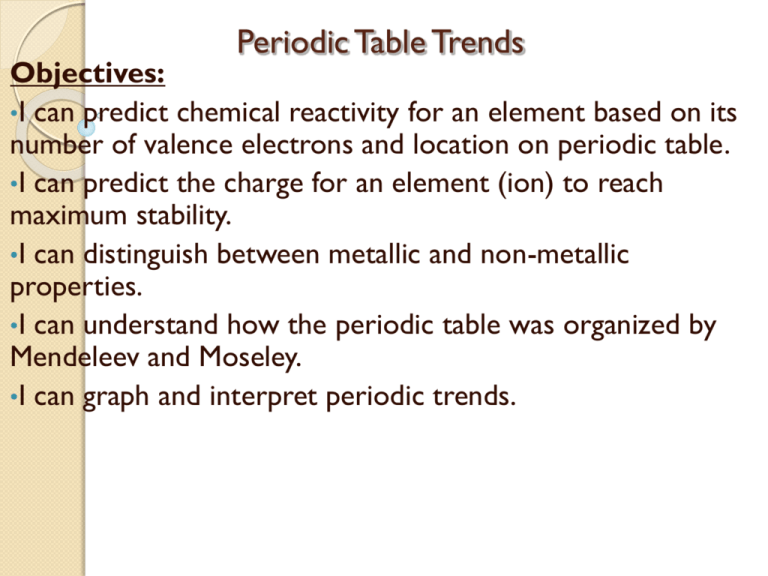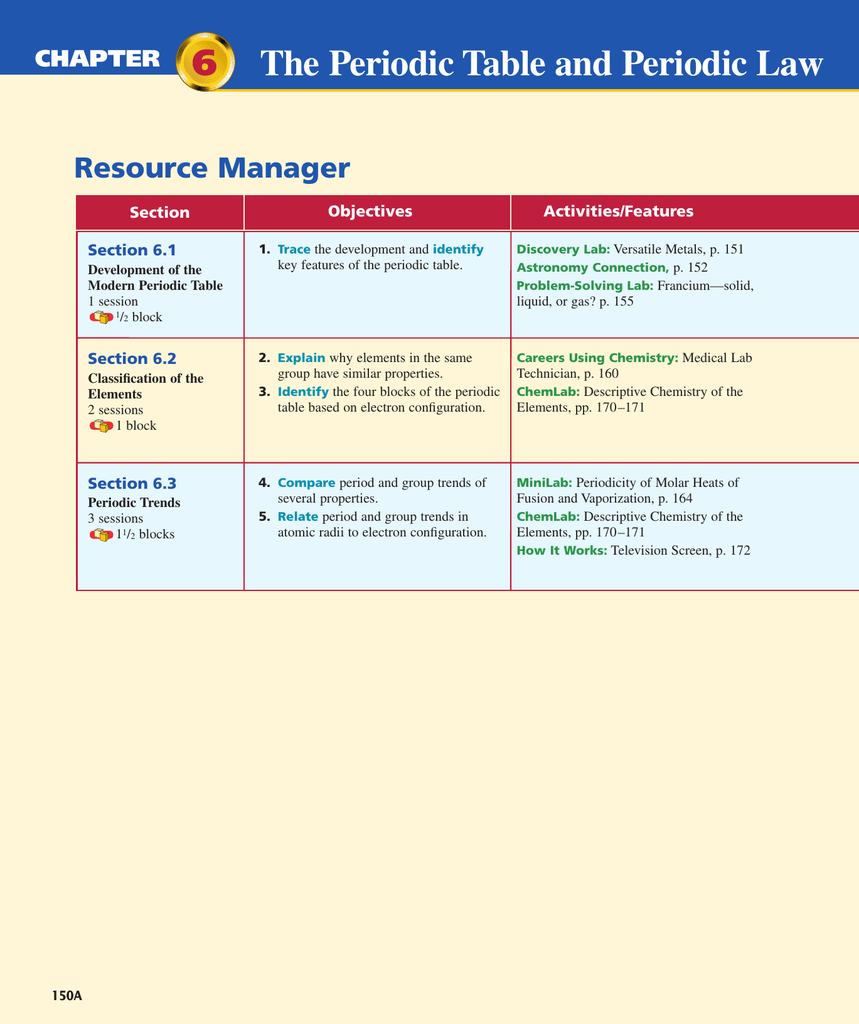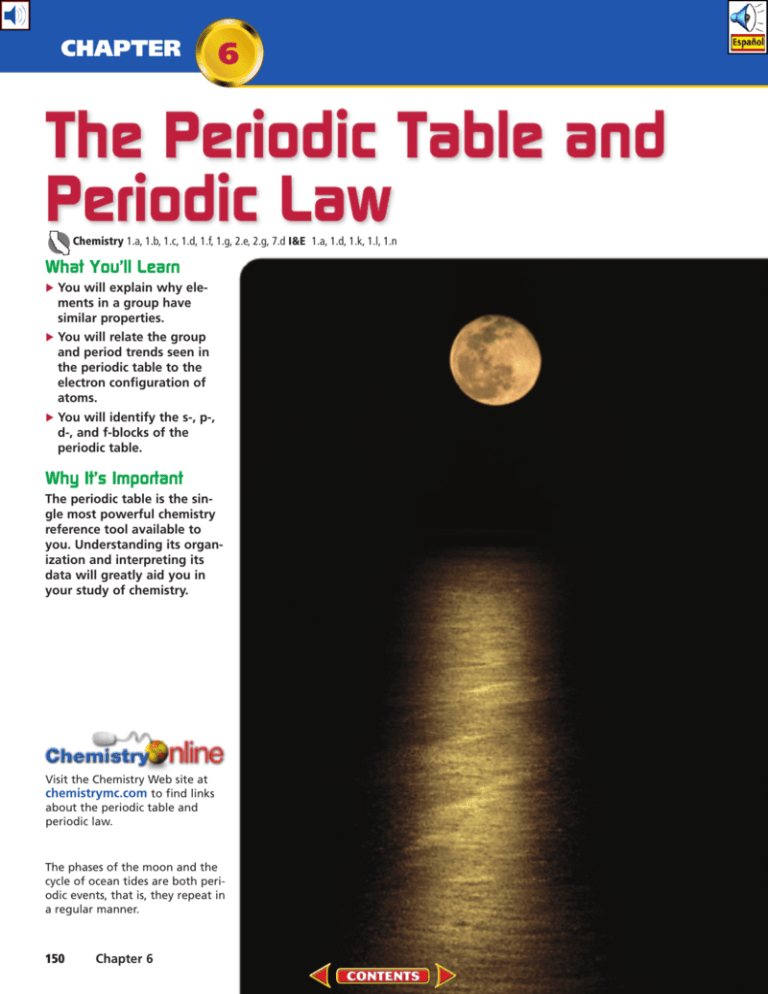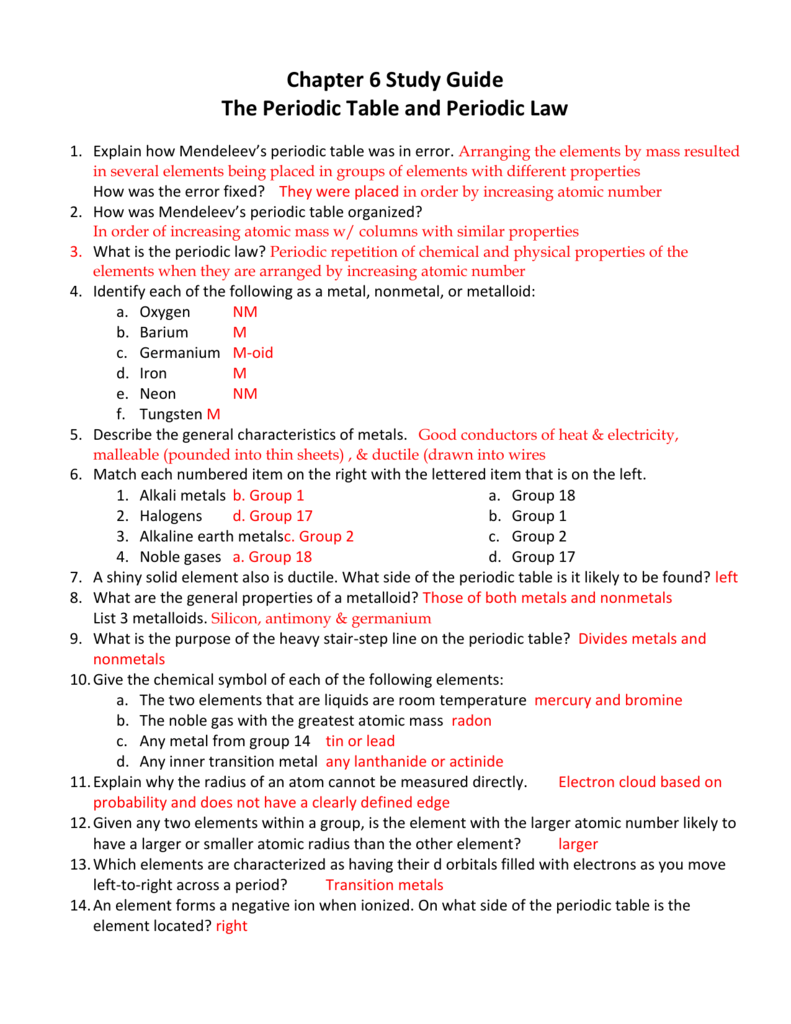Chapter 6 The Periodic Table And Periodic Law
Chapter 6 The Periodic Table And Periodic Law - Table 6.2 summarizes the contributions of. Web chapter 6 the periodic table and periodic law vocabulary. Web periodic law (6.1) statement that there is a periodic repetition of chemical and physical properties of the elements when arranged by increasing atomic number. When the elements are arranged in order of increasing atomic number, there is a periodic pattern in their physical and chemical properties. The periodic table and periodic law. Protons in the nucleus of an atom of the element. Web 1/16 previous ← next → flip space created by ambssbabyy123 chemistry test review terms in this set (16) periodic law statement that when the elements are arranged by increasing atomic number, there is a periodic repetition of their chemical and physical properties. Web the number of protons in the nucleus of an atom. The periodic table and periodic law. Click the card to flip 👆.
Web 1/16 previous ← next → flip space created by ambssbabyy123 chemistry test review terms in this set (16) periodic law statement that when the elements are arranged by increasing atomic number, there is a periodic repetition of their chemical and physical properties. Group 1 a elements, except for hydrogen, that are on the left side of the modern periodic. When interpreted properly, the table describes much of the elements physical. Properties of groups and periods in the late 1800s, russian chemist dmitri mendeleev created the periodic table by organizing elements by their atomic weight in increasing. Web chapter 6 the periodic table and periodic law vocabulary. Include contributions made by lavoisier, newlands, mendeleev, and moseley. The periodic table and periodic law. Identify different key features of the periodic table. The periodic table and periodic law in this chapter: Relate the group and period trends seen in.
Properties of groups and periods in the late 1800s, russian chemist dmitri mendeleev created the periodic table by organizing elements by their atomic weight in increasing. What did newlands discovered (1865)? Web 1/16 previous ← next → flip space created by ambssbabyy123 chemistry test review terms in this set (16) periodic law statement that when the elements are arranged by increasing atomic number, there is a periodic repetition of their chemical and physical properties. Web problem 1 describe the development of the modern periodic table. The periodic table and periodic law. Include contributions made by lavoisier, newlands, mendeleev, and moseley. Protons in the nucleus of an atom of the element. Relate the group and period trends seen in. Representative elements group a elements transition elements group b elements The periodic table and periodic law.
Chapter 6 the periodic table
A column on the periodic table. Web chapter 6 the periodic table and periodic law vocabulary. Group 1 a elements, except for hydrogen, that are on the left side of the modern periodic. When interpreted properly, the table describes much of the elements physical. Group a vertical column of elements in the periodic table arranged in order of increasing atomic.
Chapter 6 The Periodic Table and Periodic Law
A column on the periodic table. Identify different key features of the periodic table. Web 1/16 previous ← next → flip space created by ambssbabyy123 chemistry test review terms in this set (16) periodic law statement that when the elements are arranged by increasing atomic number, there is a periodic repetition of their chemical and physical properties. Web start studying.
Chapter 6 The Periodic Table And Periodic Law Study Guide Study Poster
Web increasing atomic number is called the periodic law. Click the card to flip 👆. What did newlands discovered (1865)? The arrangement of the periodic table is based on the number of: Web chapter 6 the periodic table and periodic law section 6.1 development of the pt 1.
Chapter 6 The Periodic Table and Periodic Law
Explain why elements in a group have similar properties. Group a vertical column of elements in the periodic table arranged in order of increasing atomic number;. Include contributions made by lavoisier, newlands, mendeleev, and moseley. Web increasing atomic number is called the periodic law. Group 1 a elements, except for hydrogen, that are on the left side of the modern.
Chemistry Chapter 6 The Periodic Table Worksheet Answers
Representative elements group a elements transition elements group b elements Properties of groups and periods in the late 1800s, russian chemist dmitri mendeleev created the periodic table by organizing elements by their atomic weight in increasing. The law that states that the repeating chemical and physical properties of elements change periodically with the atomic numbers of the elements. A column.
Chemistry Chapter 6 The Periodic Table Worksheet Answers
Web video answers for all textbook questions of chapter 6, the periodic table and periodic law, glencoe chemistry by numerade He discovered that the properties of elements repeat in a periodic way. Representative elements group a elements transition elements group b elements Learn vocabulary, terms, and more with flashcards, games, and other study tools. Protons in the nucleus of an.
Chapter 6 The Periodic Table and Periodic Law
Representative elements group a elements transition elements group b elements Table 6.2 summarizes the contributions of. The periodic table and periodic law. Web chapter 6 the periodic table and periodic law section 6.1 development of the pt 1. Relate the group and period trends seen in.
Chapter 6 Periodic table
The periodic table and periodic law. When interpreted properly, the table describes much of the elements physical. The periodic table and periodic law in this chapter: Table 6.2 summarizes the contributions of. Web problem 1 describe the development of the modern periodic table.
Chapter 6 Study Guide The Periodic Table And Periodic Law Study Poster
A column on the periodic table. He discovered that the properties of elements repeat in a periodic way. Click the card to flip 👆. Web video answers for all textbook questions of chapter 6, the periodic table and periodic law, glencoe chemistry by numerade Web chapter 6 the periodic table and periodic law section 6.1 development of the pt 1.
Chapter 6 Periodic Table CeilidhMavi
Representative elements group a elements transition elements group b elements Web chapter 6 the periodic table and periodic law vocabulary. Learn vocabulary, terms, and more with flashcards, games, and other study tools. What did newlands discovered (1865)? Web chapter 6 the periodic table and periodic law section 6.1 development of the pt 1.
Web Periodic Law (6.1) Statement That There Is A Periodic Repetition Of Chemical And Physical Properties Of The Elements When Arranged By Increasing Atomic Number.
A column on the periodic table. Web increasing atomic number is called the periodic law. When the elements are arranged in order of increasing atomic number, there is a periodic pattern in their physical and chemical properties. Click the card to flip 👆.
Include Contributions Made By Lavoisier, Newlands, Mendeleev, And Moseley.
Web chapter 6 the periodic table and periodic law section 6.1 development of the pt 1. The periodic table and periodic law in this chapter: When interpreted properly, the table describes much of the elements physical. He discovered that the properties of elements repeat in a periodic way.
The Law That States That The Repeating Chemical And Physical Properties Of Elements Change Periodically With The Atomic Numbers Of The Elements.
The periodic table and periodic law. Explain why elements in a group have similar properties. Relate the group and period trends seen in. Web 1/16 previous ← next → flip space created by ambssbabyy123 chemistry test review terms in this set (16) periodic law statement that when the elements are arranged by increasing atomic number, there is a periodic repetition of their chemical and physical properties.
Identify Different Key Features Of The Periodic Table.
The periodic table and periodic law. Web the number of protons in the nucleus of an atom. Table 6.2 summarizes the contributions of. Group 1 a elements, except for hydrogen, that are on the left side of the modern periodic.







